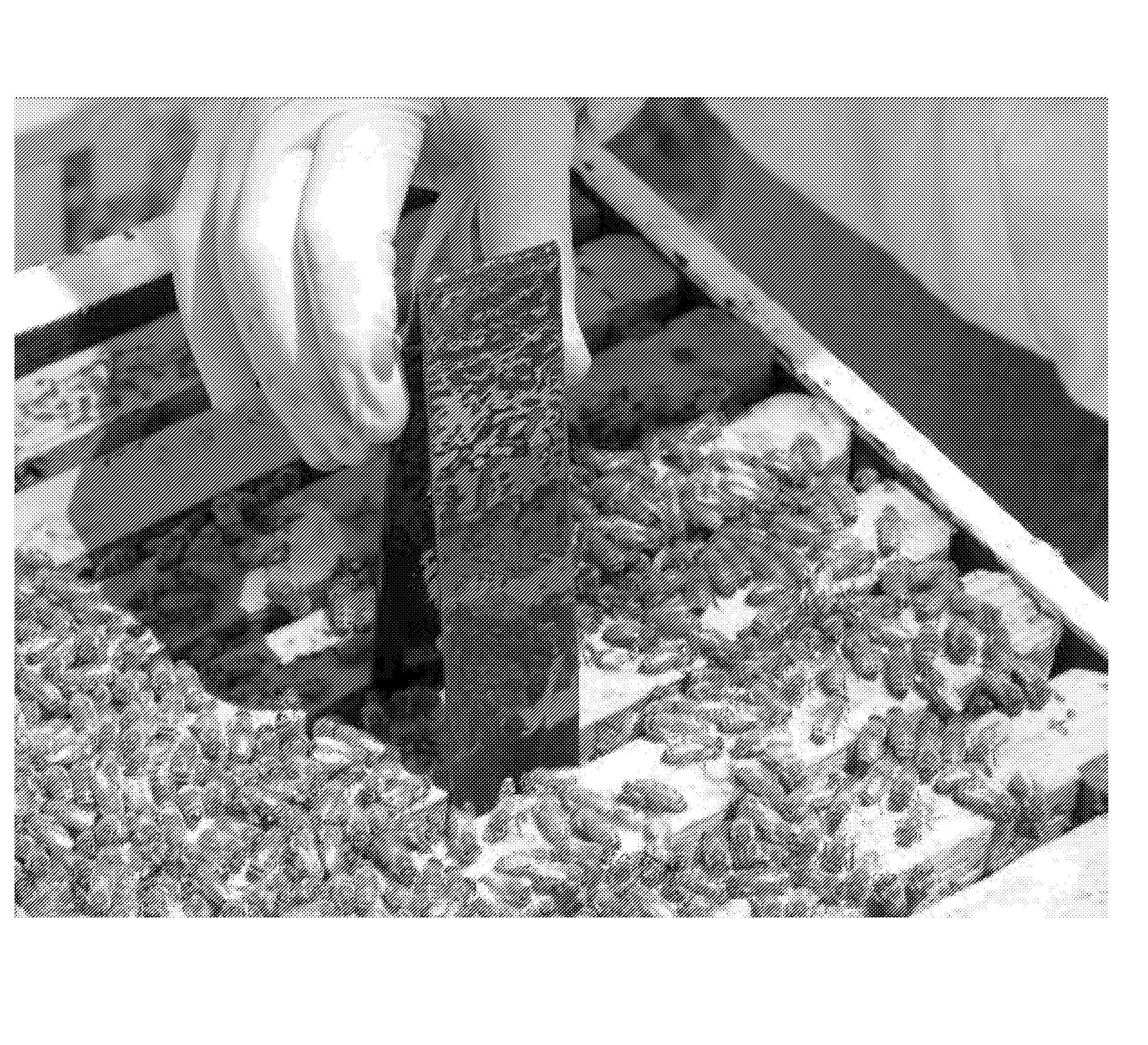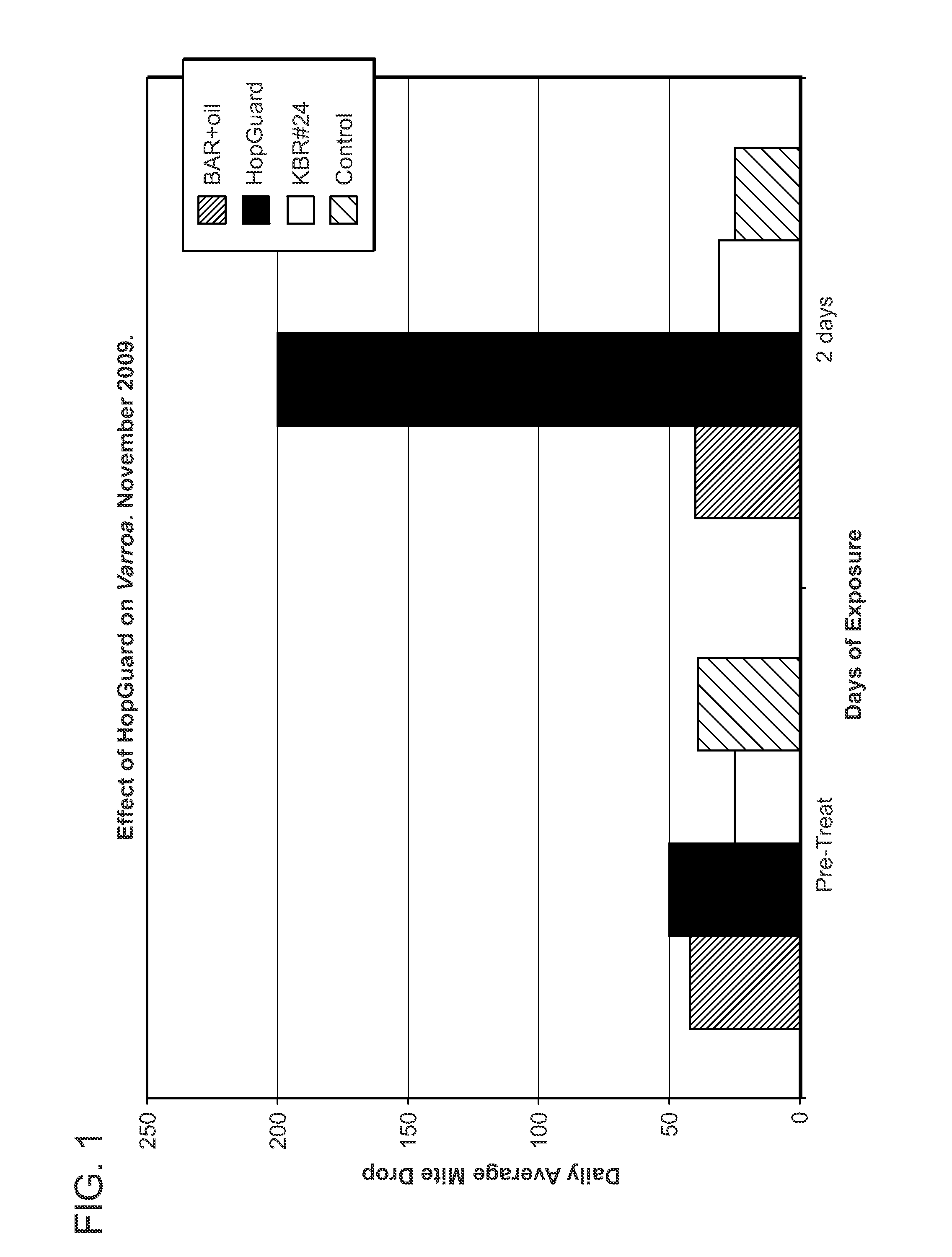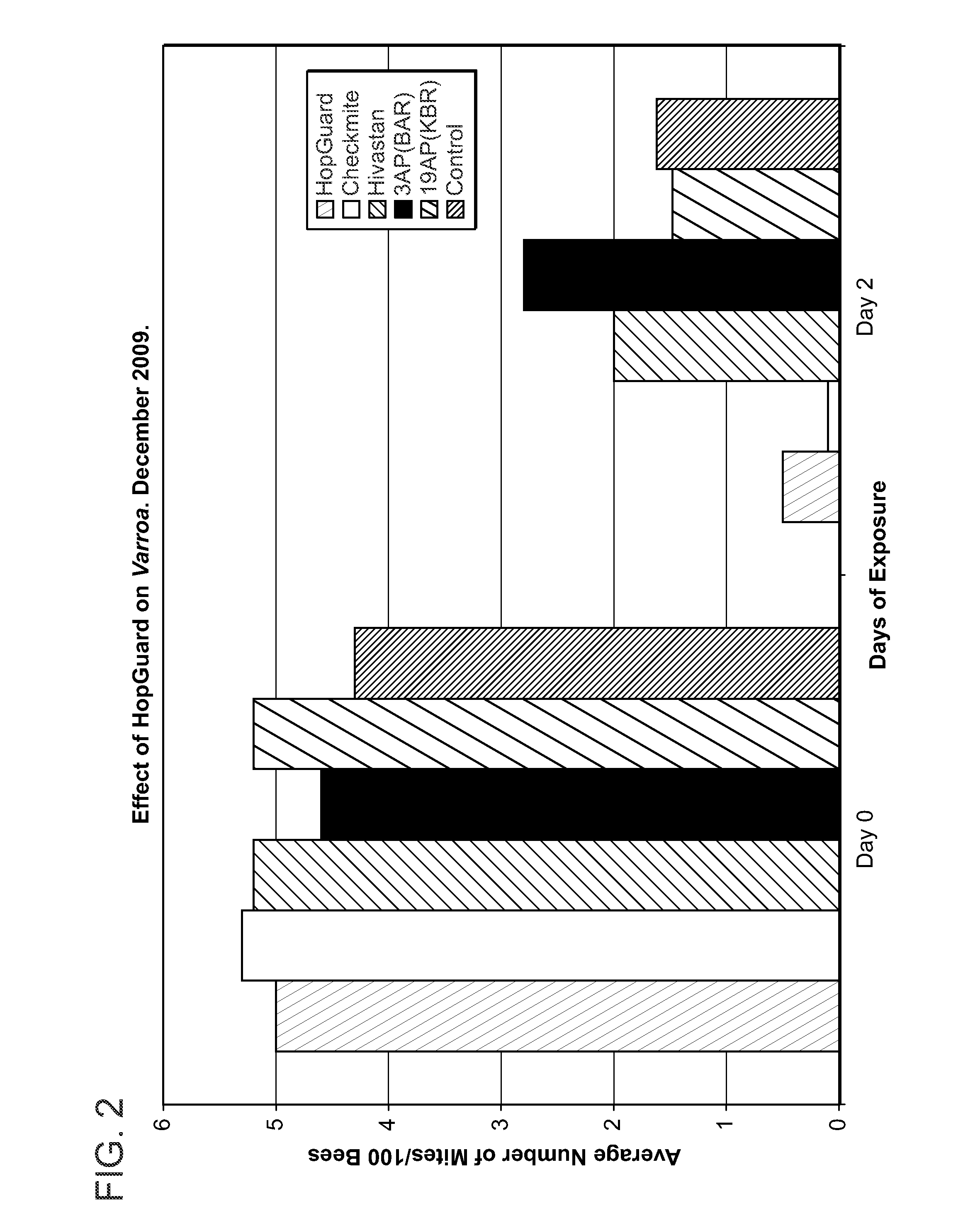Methods and compositions for controlling a honey bee parasitic mite infestation
- Summary
- Abstract
- Description
- Claims
- Application Information
AI Technical Summary
Benefits of technology
Problems solved by technology
Method used
Image
Examples
example 1
Strips comprising hop potassium beta acid resins reduced mite infestations of a hive
[0087]Three hop formulations and an untreated control were tested for efficacy against Varroa mites at the Carl Hayden Bee Research Facility in Tucson, Ariz. Hop products formulated as oil soluble 80% beta acid resins, HopGuard and potassium salts of beta acid resin (KBR) solidied in xanthan gum were prepared. Hop Guard is a liquid that comprises 33.3% potassium salts of beta acid resins, 33.3% propylene glycol, and 33.3% polysorbate-60.
[0088]The formulas were delivered in nuclear-sized five-frame colonies using cardboard strips 8.5×1.25 inches in length that had been soaked for 24 hours in the hop formulations. Two strips per hive were hung between the frames using wooden sticks.
[0089]Pre-treatment mite counts were monitored in all colonies including untreated control for 48 hours using the sticky board method. Mite counts from the colonies were used to divide the colonies into medium and high mite-...
example 2
Hop potassium beta acid resins significantly reduced mite count per bee
[0091]This trial was set up in Hawaii in conjunction with a USDA-ARS trial. Three hop formulations were tested for efficacy on Varroa mites and compared with two commercially available products and an untreated control. Two of the hop formulations were solid and the third was HopGuard strips 8.5″×1.25″ soaked in formulation for 24 hours. All hop treatments (four strips per box) were hung between the frames in only the bottom box.
[0092]Pre-treatment mite counts were monitored in all colonies including untreated control using the alcohol wash method which provides the number of live mites present per 100 bees. Colonies of equal mite-count were assigned to each treatment using 12 replications per treatment. The treatments were placed in the colonies for 48 hours after which samples were taken for mite counts and the data recorded.
[0093]The mite counts are expressed as an average number of mites / 100 bees. Pre-treatme...
example 3
Hop potassium beta acid resins significantly reduced mite infestation in a commercial setting
[0094]This trial was set up in Northern California using HopGuard to determine its effect on Varroa infested colonies in a commercial setting. Colonies consisted of ten frames and two boxes. A total of 16 colonies were used in the trial, 8 colonies were tested with HopGuard and 8 colonies were left untreated. HopGuard was delivered on cardboard strips 17.0″×1.25″. The strips were folded in half and hung over the center frames (two strips per box and four strips per hive).
[0095]Pre-treatment mite counts were monitored in all colonies including untreated control for 48 hours using the sticky board method. Mite counts from the colonies were used to divide the colonies into medium and high mite-count colonies. Colonies of equal mite-count were assigned to each treatment using eight replications per treatment. The treatments were placed in the colonies along with sticky boards and left for 48 hou...
PUM
| Property | Measurement | Unit |
|---|---|---|
| Fraction | aaaaa | aaaaa |
| Fraction | aaaaa | aaaaa |
| Fraction | aaaaa | aaaaa |
Abstract
Description
Claims
Application Information
 Login to View More
Login to View More - R&D
- Intellectual Property
- Life Sciences
- Materials
- Tech Scout
- Unparalleled Data Quality
- Higher Quality Content
- 60% Fewer Hallucinations
Browse by: Latest US Patents, China's latest patents, Technical Efficacy Thesaurus, Application Domain, Technology Topic, Popular Technical Reports.
© 2025 PatSnap. All rights reserved.Legal|Privacy policy|Modern Slavery Act Transparency Statement|Sitemap|About US| Contact US: help@patsnap.com



